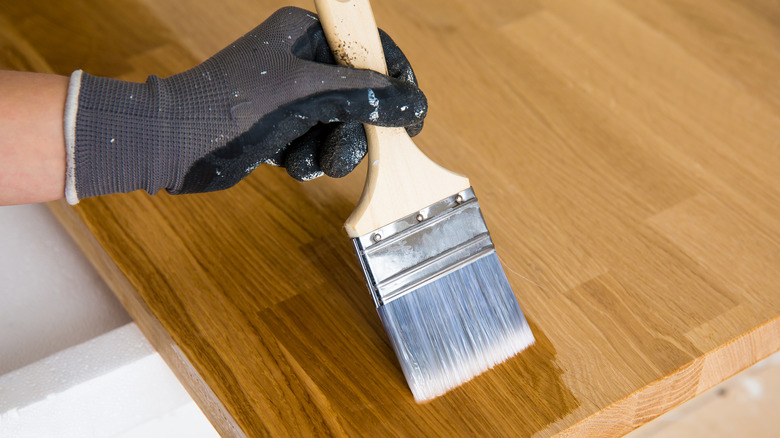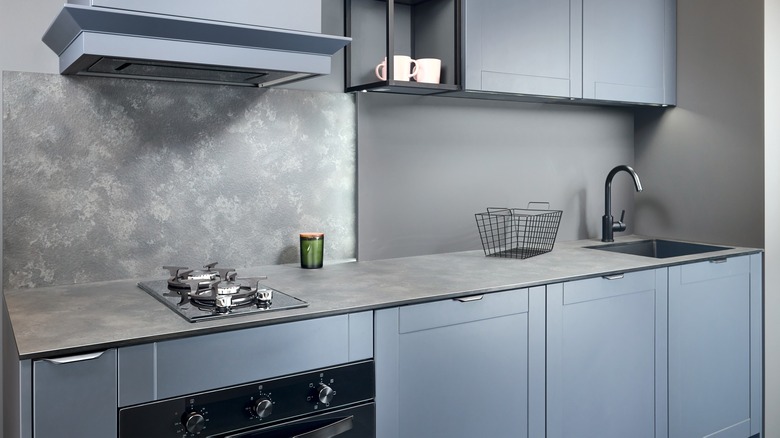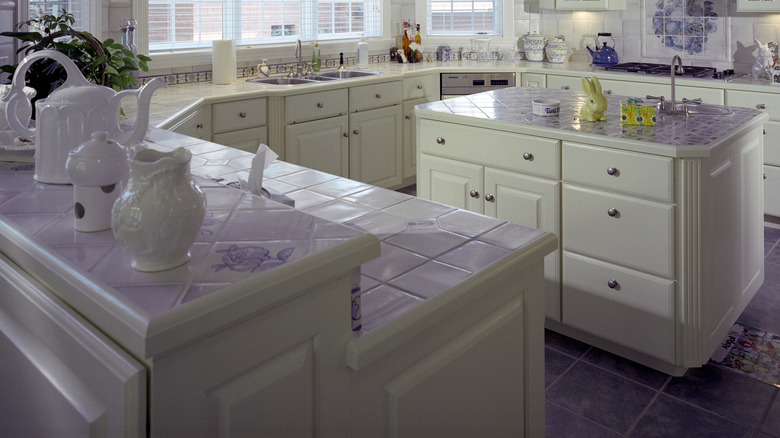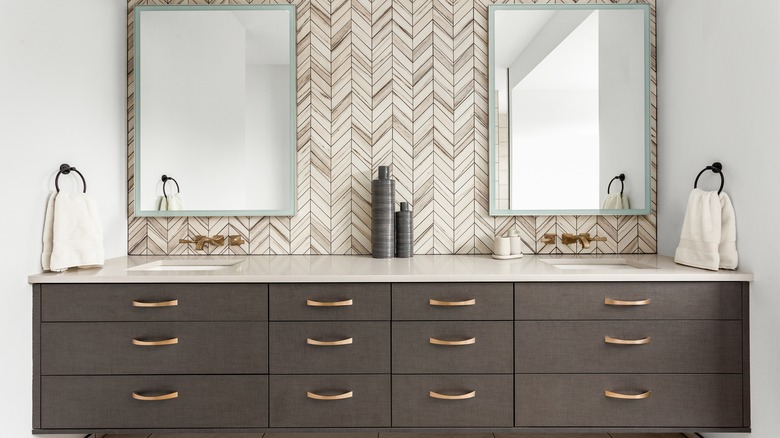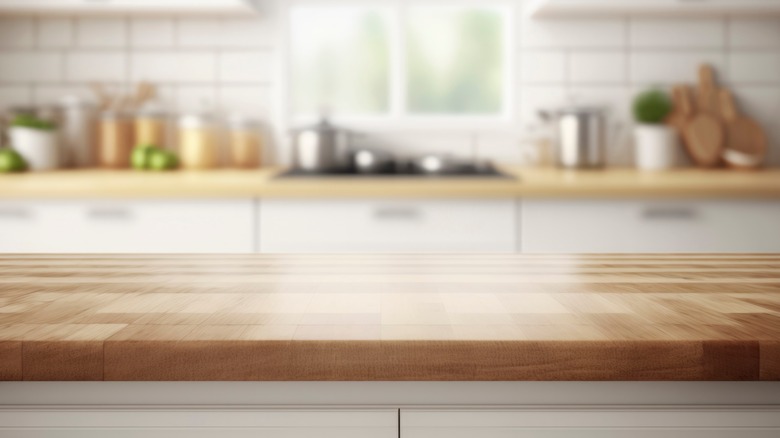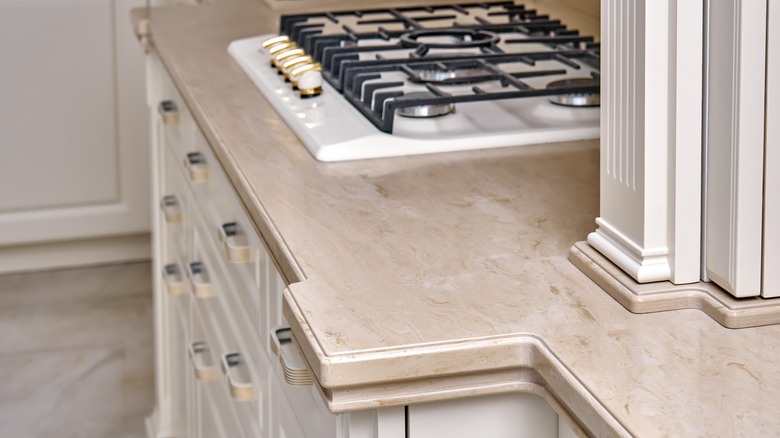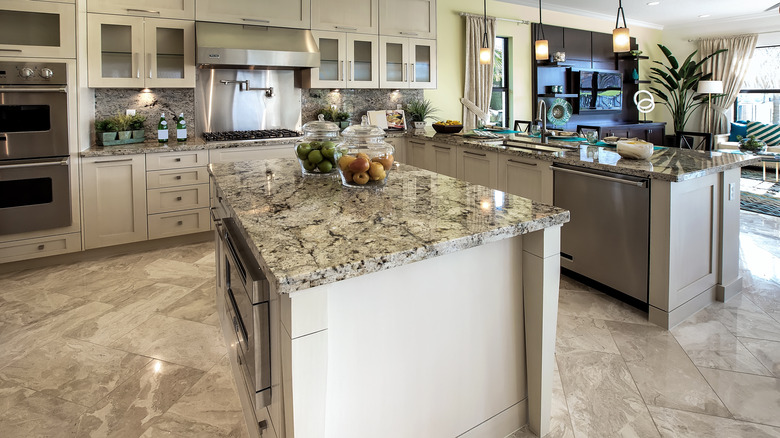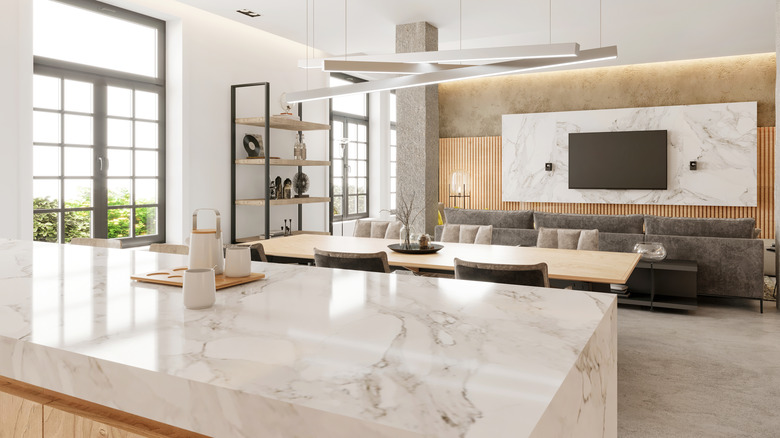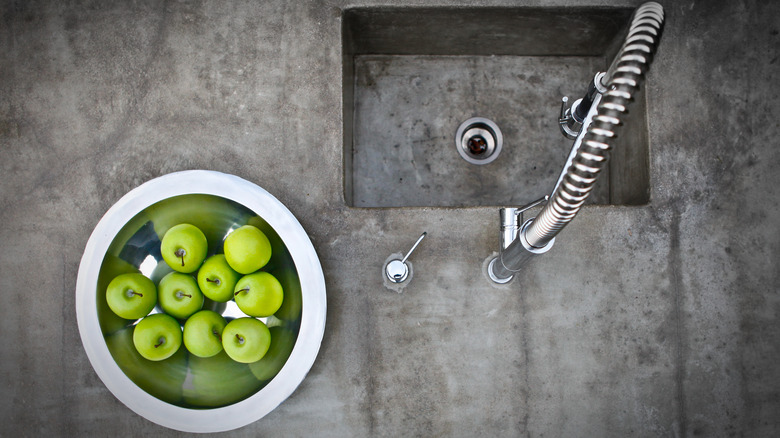The Best And Worst Countertops For That Painted Renovation
We may receive a commission on purchases made from links.
Over time, we all inevitably end up with worn or dated kitchen or bathroom countertops that are in dire need of a renovation. While these could be replaced completely, buying entirely-new countertops is quite expensive, no matter what material you choose. Instead, to save some big bucks, DIYers sometimes paint over their countertops to give them a fresh appearance. However, before you begin this renovation, it's important to consider the material your current countertops are made of, as certain types are better for painting over than others.
In general, painting countertops involves time, patience, and effort, with a protocol to sand, buff, prime, paint, and finally seal the surface. Certain materials can go through this transformation, while others may be too slick or delicate to do so. Some surfaces also cannot absorb the paint, so if you try to cover these types, you may end up with a big mess. If you're interested in painting over your countertops and find that your material is well-suited for this DIY, there are a few tools you'll need, including primer, the paint of your choice, and a polishing top coat. You'll also need a small foam roller, painter's tape to protect your edges, sandpaper, and a brush.
Best: Laminate countertops
Laminate countertops are one of the best surfaces for a painted renovation. Painting a laminate countertop can make a big impact on your space without doing (or spending) too much. Since laminated surfaces are extremely smooth after production, they require a bit of sanding and buffing before getting started. After the unique surface is prepped, go in with a paint primer like the scratch-resistant Varathane Ultimate Polyurethane from Home Depot. You can then go in with your color of choice and then a clear top coat.
Best: Ceramic tile countertops
Ceramic tile countertops, while quite unpopular, are another great option for a painted renovation. Because of their sturdy and porous surface, they're very receptive to paint. Be sure to use latex paint, which is designed for home improvement, to achieve full coverage. To ensure you get into all the nooks and crannies, you may want to start by painting the grout lines with a brush. Then, you can go back over the entire surface with a small foam roller.
Worst: Quartz countertops
Quartz countertops are made from engineered stone. They're typically durable and resistant to scratches and stains. However, because of the slick and nonporous surface, paint doesn't hold well on quartz countertops and is likely to chip away over time. For homeowners with this material, a better alternative is to sand and buff the surface to make it look brand-new. Lucky for those with quartz surfaces, this countertop type is less likely to need a painted renovation than other types that may show more wear and tear.
Best: Wood countertops
You may already know that wood is a popular surface for paint renovations because paint generally adheres to wood well. Once painted, wooden countertops can also bounce back from scratches and stains, specifically when covered with a water-resistant sealer such as Waterlox, available on Amazon. This product forms a protective coating over the surface and prevents any traces of moisture, staining, or handprints. If you're thinking about renovating your wooden countertop, it's crucial to cover the surface with a sealer afterwards to protect it from damage.
Worst: Solid surface countertops
While solid surface countertops, which are made from resin, pigment, and minerals, can be painted, this probably isn't the best idea. Because they're nonporous, the paint may not adhere well to the surface. Further, they can be susceptible to scratches, stains, and other marks, which would show on top of the paint. Much like quartz, solid surface countertop owners could opt for sanding and buffing to maintain the appearance rather than adding a coat of paint.
Worst: Granite countertops
Surprisingly, there are a variety of opinions when it comes to painting granite countertops. Some homeowners say that, while painting granite won't damage the surface, this stone is a strong material that typically doesn't hold paint very well — in fact, the paint could begin peeling off. If you're an expert at intricate home design, a high-quality primer and lots of sanding may be able to do the trick. However, if you try painting over granite, be cautious and observant of the newly-painted surface so you don't damage it.
Best: Marble countertops
Although marble is one of the more delicate surfaces included in home design, the material is responsive to a painted renovation. Because of its shine, however, it's important to go about painting your type of marble countertop in the correct manner. You'll want to sand down the surface and use chalk paint or an acrylic-based paint, both of which have enough strength to freshen up a marble surface. While chalk paint gives it a matte finish, an acrylic-based paint offers a more glossy finish. On the other hand, acrylic paint won't last as long as chalk paint and may require a touch-up every few months.
Best: Concrete countertops
Last but certainly not least, the most receptive texture of all may just be concrete. Since concrete countertops are created from cement and sand, they're able to handle multiple coats of paint and can hold the colors quite well. Before getting started, sand and buff the surface to ensure it's leveled-out. After coating the surface with a primer of your choosing, use a roller brush to add the paint until you're satisfied with the final look. Regardless of how many coats you choose to add, don't forget to finish off the look with a food-grade sealant, like the Cheng Food-Safe Concrete Countertop Sealer from Amazon.
